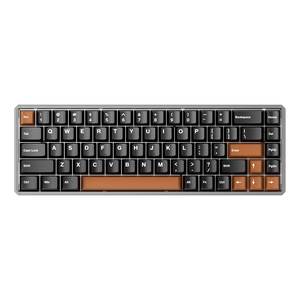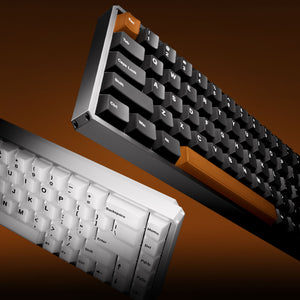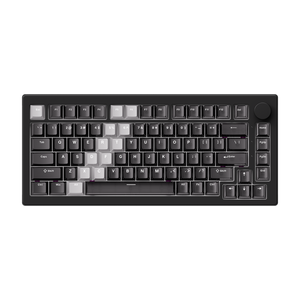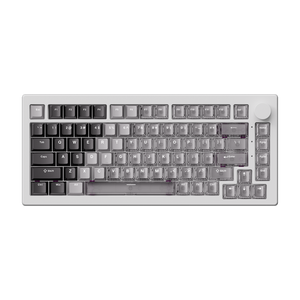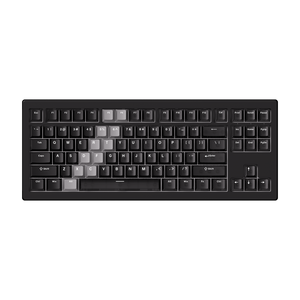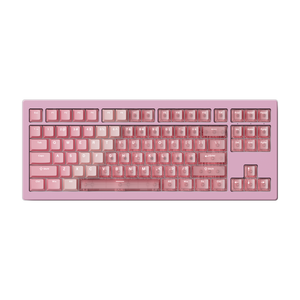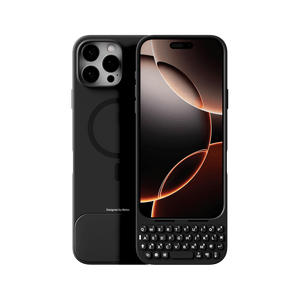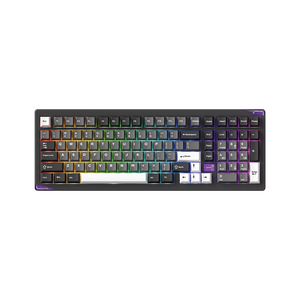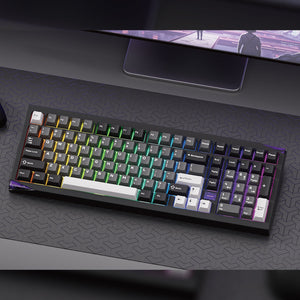What is a 60% keyboard and a 65% keyboard?
A 60% keyboard is a compact mechanical keyboard. It almost entirely dispenses with the function block, navigation keys, and numeric keypad, reducing it to the basic letter and number keys.
What remains are the main alphanumeric keys (letters, numbers, and symbols) as well as some important modifier keys such as Shift , Ctrl , and Alt . Depending on the layout, it typically comprises 61 keys .
The 65% keyboard is based on the 60% layout, but adds dedicated arrow keys and some additional navigation keys (e.g. Delete , Home , End , or Page Up/Down ).
In total, a 65% keyboard has between 66 and 68 keys – it is only slightly wider than a 60% keyboard, but offers significantly more functionality and comfort for many users.
| function | 60% keyboard | 65% keyboard |
| Total number of keys | Approximately 61–68 keys (letters only, no arrow keys) | Approximately 68–71 keys (letters + dedicated arrow keys) |
| Function keys (F1–F12) | No | No |
| Arrow keys | No (only via layers) | Yes |
| Navigation keys | No | Limited (depending on model) |
| Numeric keypad | No | No |
| Size | Ultra-compact | Compact |
Advantages and disadvantages of 60% keyboards
Advantages
- Ultra-compact and portable: The most compact design is ideal for users who often take the keyboard with them or have limited desk space.
- Ideal for FPS games: In FPS games (like CS:GO and PUBG), you mainly use the WASD keys and a few additional function keys. A 60% layout provides more space for the mouse and reduces wrist strain.
- Suitable for keyboard customization: Many fans of custom mechanical keyboards prefer the 60% format for individual customization.
- Minimalist design: Fewer keys and a clean layout create a modern, uncluttered workspace with a stylish look.
Disadvantages
- More complex operation: Since only the alphanumeric field and important modifier keys are available, many functions must be called up using keyboard shortcuts.
- Reduced typing efficiency: Using keyboard shortcuts is less efficient than dedicated keys, which can slow down typing.
- Adjustment period necessary: Switching from a full-size keyboard requires time to get used to missing keys and the use of layers.
Advantages and disadvantages of 65% keyboards
Advantages
- Compact and space-saving: Small in size, ideal for use in tight work areas or on business trips.
- Still feature-rich: Even without the F-key row, the keyboard offers dedicated arrow keys, which makes everyday use much easier.
- Easy transition from larger layouts: Those switching from a full-size or tenkeyless keyboard will find the 65% layout easier to navigate than the 60% layout.
Disadvantages
- Nevertheless, frequent use of keyboard shortcuts: Many functions still have to be executed using keyboard shortcuts, which requires a certain amount of time to get used to and learning.
- Less portable than a 60% keyboard: Slightly larger than a 60% keyboard, making it slightly less portable – but still more compact than a full-size keyboard.
- Different layouts depending on the brand: The arrangement of the keys (e.g. whether Home/End is present) can vary depending on the manufacturer – so you should take a close look before buying.
Who is a 60% keyboard suitable for?
- Gamers who play FPS games and need more space for the mouse
- People who travel a lot or work remotely
- Lovers of minimalist setups
- Advanced users who can handle layers
- Keyboard enthusiasts and modders
Who is a 65% keyboard suitable for?
- Everyday users who want compactness without major compromises
- Office workers and prolific writers
- Gamers who want to combine practicality and space saving
- Users switching from larger layouts
- Users who do not want to rely on layers
Conclusion: Which is better?
There's no one-size-fits-all answer—the better layout depends entirely on your individual needs, preferences, and how you use your keyboard.
| criterion | 60% layout | 65% layout |
| mobility | ★★★★★ (Ultra-compact) | ★★★★ (Slightly larger, but still compact) |
| Functionality | ★★ (Heavily dependent on keyboard shortcuts) | ★★★★ (Dedicated arrow keys and some navigation keys) |
| Efficiency | ★★ (Best for focused tasks) | ★★★★ (Better suited for multitasking) |
| ergonomics | ★★ (May cause fatigue with prolonged use) | ★★★★ (Comfort closer to full-size keyboards) |
| Price | ★★★★★ (Very good value for money) | ★★★ (Mainly mid- to high-price segment) |
| Best for | FPS gaming, minimalist setups, keyboard modding | Writing, programming, MOBA gaming, light office work |
- If you're willing to invest time in learning the layering features and value maximum portability and a minimalist appearance, you should choose a 60% keyboard .
- If you need an arrow keypad but don't want a keyboard that's too big, the 65% keyboard is a better choice.
- If your primary goal is to save space, go for the 60% keyboard .
- If you're looking for a good balance between functionality and looks, the 65% keyboard is ideal.
- If you primarily play MOBA or RPG games , a 65% keyboard might be more suitable.
- If you prefer FPS games , you will probably prefer a 60% keyboard .
Akko 60% keyboard recommendation
FUN60 Pro ISO HE Magnetic Keyboard
The FUN60 Pro ISO is a cost-effective choice for users seeking a powerful, compact keyboard with features typically found only in high-end models. It offers a full RT0.01 resolution and a polling rate of 8000 Hz in wired mode—ideal for gaming and demanding applications.
Main features:
- ISO layout
- Compatible with common magnetic switches
- Full RT0.01 mm detection
- 8000 Hz polling rate
- ARGB with 500 Hz refresh rate
- Demagnetized stabilizers




